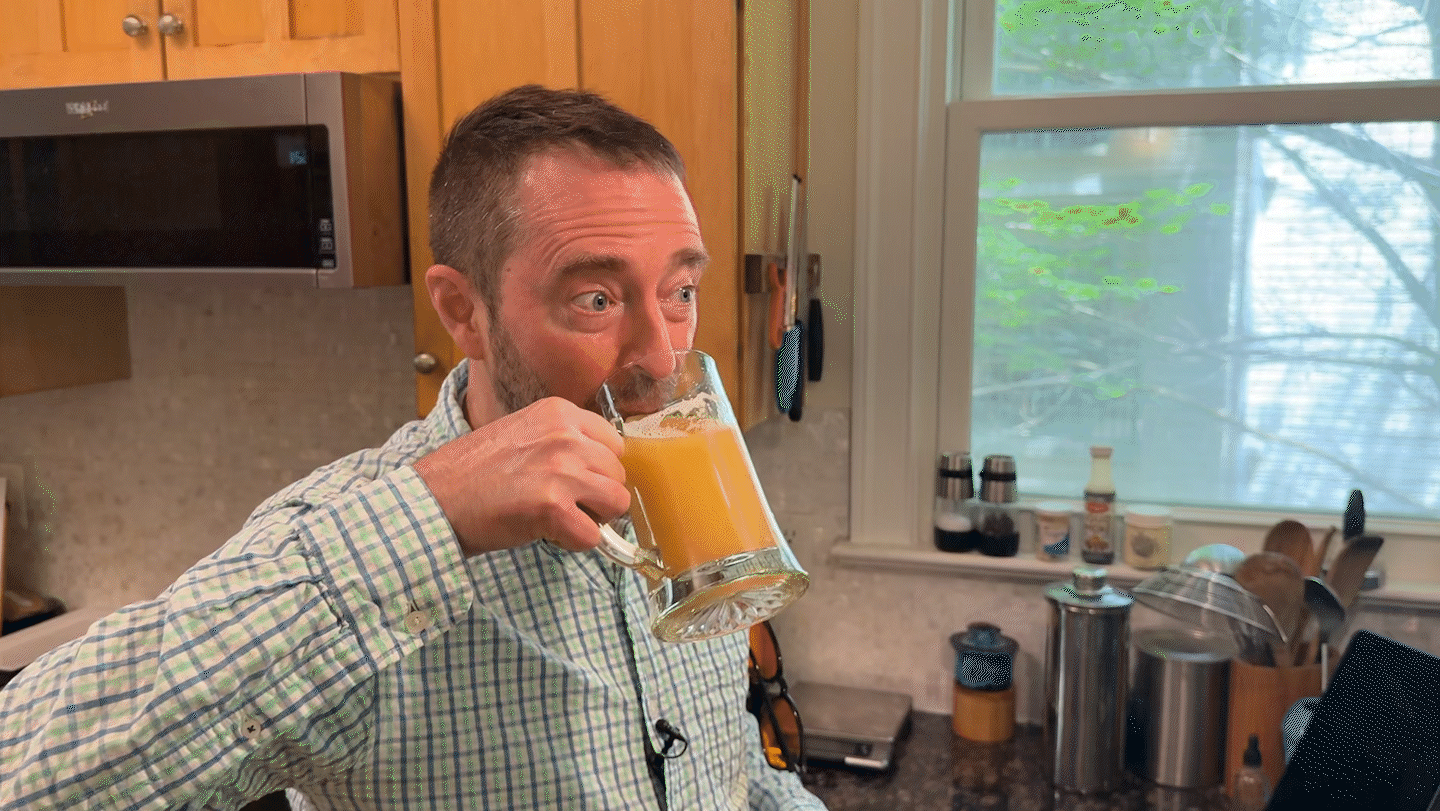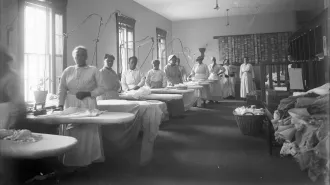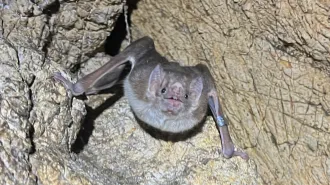Cancer uses mitochondria to reprogram neighboring cells
Powerhouses of cancer cells infiltrate fibroblasts, fueling growth and altering gene activity

Mitochondria (red) travel from cancer cells (left side of image) down a threadlike tube (center) to connective tissue cells called fibroblasts (right side of image).
Michael Cangkrama, Sabine Werner
Cancer cells can brainwash their neighbors.
Like the CIA deploying secret agents to turn an enemy, tumors use a similar strategy to manipulate nearby cells. The tumors’ agents are mitochondria, the energy-producing “powerhouses” of the cell. Once these mitochondria infiltrate healthy cells, they can reprogram the cells to do cancer’s bidding, a recent study suggests.
For years, scientists have known that tumors can steal mitochondria from surrounding cells. But the new work suggests that tumors can also do the opposite. In cancer, mitochondrial transfer swings both ways, says Sabine Werner, a biochemist and cell biologist at ETH Zurich.
Werner’s team identified a crucial protein that cancer cells use to dispatch their mitochondria henchmen. Unmasking such molecular players is important because they offer a window into the development of new therapies. It’s still early days, but the protein, MIRO2, “is certainly an interesting target,” she says.
Werner’s team hadn’t planned to hunt for rogue mitochondria. The researchers were studying how cancer cells communicate with connective tissue cells known as fibroblasts. Then, one of her colleagues showed her something strange: A long, skinny structure connecting the two cell types like a piece of wire.
“What is this?” she remembers him asking. The microscopic thread looked like a tunneling nanotube, a narrow cellular highway known for shuttling mitochondria and other cargo between cells. “I got really excited,” Werner says. In the lab, her team observed mitochondria from cancer cells journeying into neighboring fibroblasts, a phenomenon not reported until now.
This influx of traveling mitochondria gave the recipient cells “a hyper boost,” Werner says. In just 24 hours, the mitochondria-rich fibroblasts began to grow faster and crank up the activity of genes linked to cancer, the team reported August 28 in Nature Cancer. These results suggest that the cells had been reprogrammed by the cancer cell mitochondria into cancer-supporting minions. And when injected alongside cancer cells in mouse ears, the turncoat fibroblasts prompted tumors to bubble up like little red balloons.
While Werner’s team still has questions about the mitochondrial transfer process, the researchers have identified a key player. MIRO2 shuttles mitochondria to the edge of the cell, where the tubes form. Without MIRO2, cancer cells can’t send their mitochondria to fibroblasts, the researchers found.
The picture emerging from Werner and others’ work is that cancer can use mitochondria to manipulate the surrounding environment, says Yosuke Togashi, a molecular biologist at Okayama University in Japan. This manipulation includes more than just fibroblasts. Cancer cells can also transfer mitochondria to immune cells, weakening their typical cancer-fighting abilities, Togashi’s team suggested earlier this year in Nature.
Though the field of mitochondrial transfer is still in its infancy, it’s growing fast, says molecular biologist Jiří Neužil of the Czech Academy of Sciences in Prague. And as for cancer cells shunting their powerhouses to fibroblasts, he says, “I have no doubt that is happening.” Werner’s results have prompted a tsunami of new questions, he says. “What is the driving force behind it? What is the trigger? What is the mechanism?”
Werner’s team is pondering these questions, too. For her, the findings are a good example of what can happen when scientists take the time to follow an unusual thread. And in her team’s case, that “thread” — those stringlike nanotubes — turned out to be more than mere metaphor.







